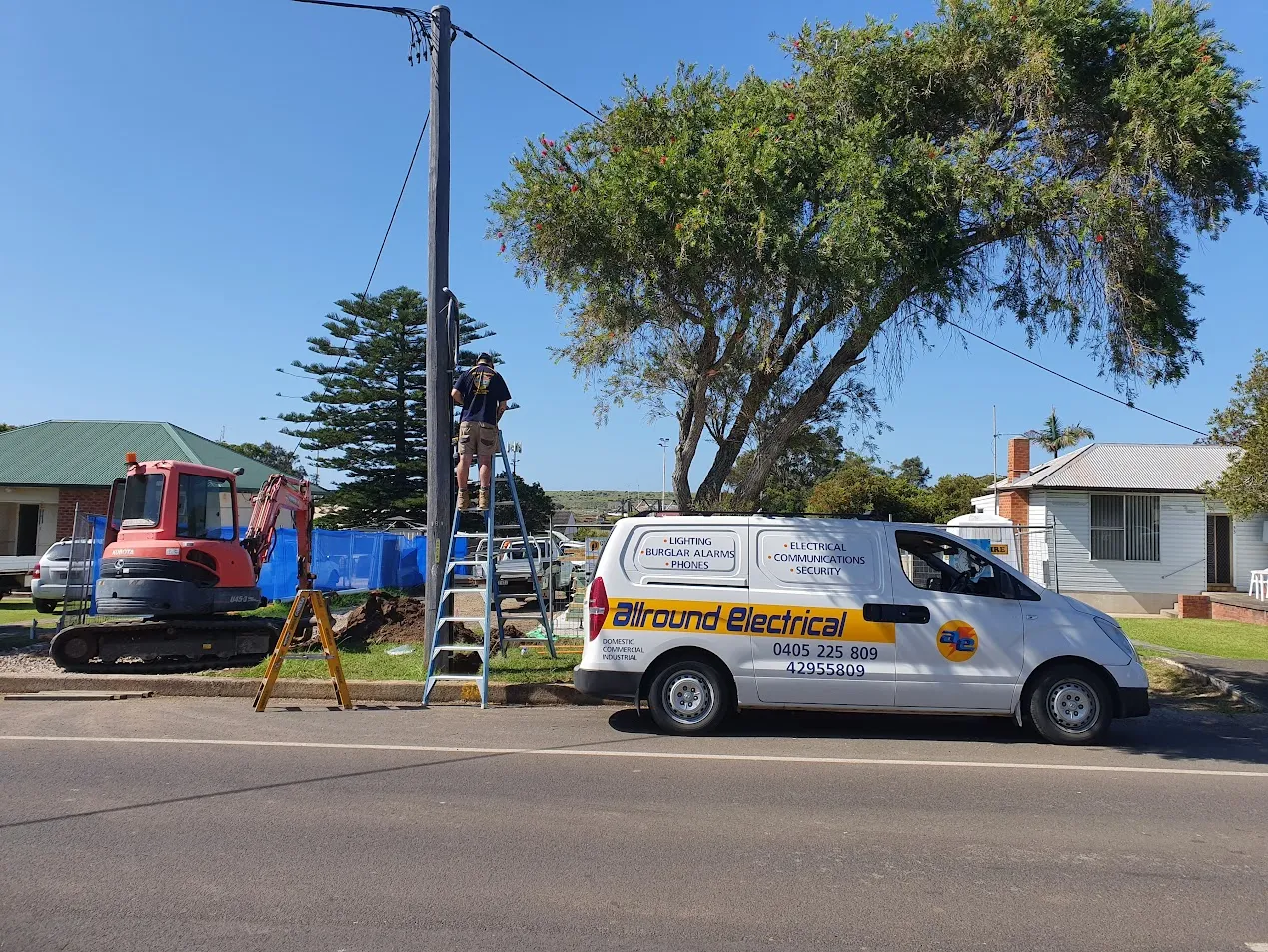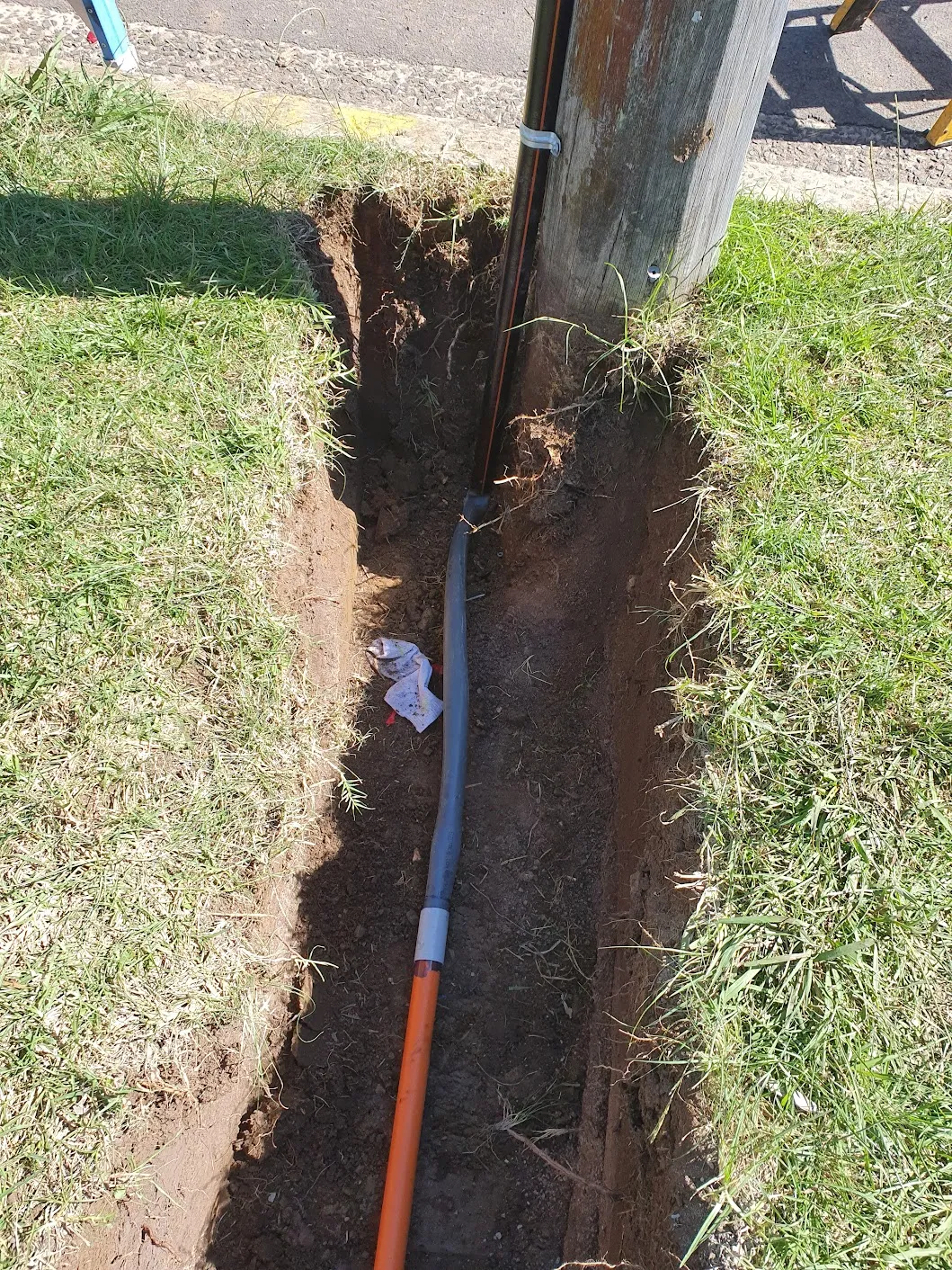
Electrical work varies widely in complexity, and not all tasks can be handled by a standard electrician. Some jobs require specialised training, equipment and government authorisation, especially when they involve the electrical network itself. That’s where Level 2 electricians come in. At Allround Electrical, we’ve seen how critical Level 2 services are in keeping NSW homes and businesses safe, compliant and properly connected. Whether you’re upgrading your property, dealing with power supply issues or planning new construction, understanding electrical work ensures you hire the right professional for the job.
In this guide, we break down what these electricians do, when you need one and why their expertise matters for safe and reliable electrical performance.
Level 2 electricians are accredited by the NSW Department of Planning and Environment to work directly on the electrical distribution network, a responsibility that goes far beyond the scope of a standard electrician. These professionals are essential for ensuring that properties in NSW remain safely connected and compliant with regulations.
Unlike standard electricians, Level 2 service providers are legally permitted and specifically trained to work on components that fall outside a property’s internal wiring. This includes the crucial infrastructure that links your home or business to the wider electricity grid. A Level 2 electrician is authorised to handle:
To qualify, a standard electrician must complete further specialised training and achieve accreditation demonstrating their ability to work safely on the distribution network. This advanced training prepares them to operate in environments involving higher voltages, exposed mains and complex fault conditions. Their training includes:
Level 2 electricians also use highly specialised tools not typically used by standard electricians, such as:
Level 2 electricians are further separated into categories, each representing different types of work they are authorised to perform. Many service providers carry multiple categories, enabling them to manage a broad range of network-related tasks. The categories include:
Category 2A: Disconnect and Reconnect
Category 2B: Underground Service Work
Category 2C: Overhead Service Work
Category 2D: Metering and Energisation
Level 2 electricians possess a skill set that extends far beyond general wiring and installation. Their qualifications enable them to work safely at the interface between the property and the electrical network, a zone where higher voltages, stricter regulations and greater risks apply. Skills and authorisations include:
Not every electrical task requires a Level 2 electrician, but certain situations absolutely do, especially when the work involves your property's connection to the electrical network. Level 2 electricians are authorised to perform tasks that involve the point where your private electrical installation meets the public supply. These situations tend to be higher risk, more complex and regulated under strict NSW rules. Hiring the right accredited professional ensures safety, compliance and long-term reliability of your electrical supply.
Whether you’re building a new home, renovating an existing property or managing a commercial project, there are many instances where only a Level 2 electrician can legally adjust the electrical supply from the street. Situations requiring their expertise include:
Your consumer mains are the cables that run between your switchboard and the network supply point, either overhead via a service line or underground through a mains conduit. These cables are crucial to maintaining a stable and safe electrical supply, and only Level 2 electricians can legally work on them. They handle tasks such as:
Many everyday situations, both residential and commercial, require a Level 2 electrician even when property owners may not initially realise it. Understanding these scenarios helps avoid downtime, compliance issues or safety risks. Residential examples include:
Commercial examples include:
You may not always know when a situation requires a Level 2 electrician, but there are key warning signs that your supply infrastructure, not your internal wiring, is the issue. Look out for:

Every task must follow strict regulations to ensure the safety of residents, workers, property and the broader electricity grid. NSW maintains some of Australia’s most robust compliance frameworks, and electricians must meet all of them before touching consumer mains or network supply equipment.
Compliance goes beyond following safety rules; Level 2 electricians must meet strict legal obligations to maintain licensing and perform authorised network work. Typical legal and regulatory responsibilities include:
All Level 2 electrical work must be supported by proper documentation. Without this paperwork, the network provider will not energise, reconnect or approve the installation. Required documentation includes:
This shift has made the main upgrades not only beneficial but also often necessary. Level 2 electricians are the specialists trained and authorised to perform these critical tasks, ensuring your property remains safe, compliant and capable of handling today’s electrical loads.
A Level 2 electrician can upgrade a property from single-phase to three-phase power, increasing capacity and stability. This includes air conditioning systems, EV chargers, pool heating equipment, commercial-grade workshop tools and any machinery that requires smoother, more reliable power delivery. As modern homes continue to grow in size and technology, many choose three-phase upgrades to reduce voltage drop, avoid overloading and future-proof their property for upcoming electrical needs.
Electricians manage overhead and underground service lines, each requiring specialised skills and equipment. For overhead mains, this includes installing new lines and relocating service connections to suit renovations, extensions or compliance requirements. For underground mains, the work involves trenching, conduit installation, cable laying, waterproofing, insulation repairs and safely connecting underground consumer mains to the network supply point.
These tasks must be handled with precision, as improper installation can lead to faults, water ingress, fire hazards or immediate supply interruptions.
Private power poles are common in rural properties, large residential lots and locations where network poles cannot be safely or conveniently accessed. This involves assessing pole condition, addressing rot or corrosion, managing vegetation clearances and ensuring the pole has correct stay-wire support and conductor tension. They are also responsible for ensuring the service lines running from the network to the pole and from the pole to the house are structurally sound, properly insulated and safely connected.
This work prevents hazards such as sagging lines, storm-related failures and supply interruptions.
Every upgrade involving mains connections must meet strict NSW Service and Installation Rules. Experts manage compliance from start to finish, ensuring that all cables, connection points, metering equipment and protective devices meet current standards. This includes testing, verifying earthing arrangements and ensuring correct point-of-attachment installation.
Regular maintenance of mains connections is also essential, especially for properties with older infrastructure, overhead lines exposed to storms or underground mains located in areas with shifting soil conditions. A compliant and professionally maintained mains system reduces the risk of fires, shocks, outages and expensive emergency repairs.
Modern homes rely on a steady and reliable electrical supply to power everything from essential appliances to smart home technology and EV chargers. When the incoming supply becomes unstable or compromised, it can disrupt daily routines, reduce safety, place unnecessary strain on equipment and create serious electrical hazards. These issues often develop gradually, but they can also appear suddenly and unexpectedly. By understanding the most common supply-related challenges, homeowners can recognise early warning signs and take proactive steps to protect their home.
Cable damage is one of the most common causes of electrical instability in homes, and it can occur due to environmental conditions, ageing infrastructure or accidental interference. Overhead and underground service lines work continuously to supply power, but any deterioration, impact or insulation breakdown can quickly lead to flickering lights, intermittent outages or complete loss of power.
Coastal properties face unique electrical supply challenges due to salt exposure, humidity and strong winds. Salt is highly conductive and corrosive, meaning even small deposits can weaken the system and cause unsafe conditions. Homes near the ocean often require more frequent maintenance and specialised materials to ensure long-term electrical safety and reliability.
Understanding what Level 2 electricians do helps you make informed decisions when dealing with your property's power supply. From mains upgrades to defect rectifications and metre installations, these specialists provide essential services that keep homes safe. If you need professional, accredited assistance for any Level 2 electrical work, we here at Allround Electrical offer the experience, authorisation and reliability required to deliver safe and compliant results.



